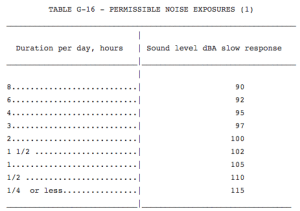Insight
Published and updated
The Cost of Communication Breakdowns to Construction Site Safety
The costs of communication breakdowns accrue for finances, productivity, and worker safety and morale.
Stop! Go. Left. Right. Up. Down. Watch out! Yes. No.
Simple commands and answers are worthless if they can’t be heard or are misunderstood. But how much does it cost? It can be hundreds of thousands of dollars in fines or damages, lost work hours, and increased stress for crew members.
Loud equipment, traffic, and workers performing complex tasks while out of visual contact all contribute to communication breakdowns on public works projects and construction sites. The good news is that solutions to improve communication are out there. On the downside, construction companies and municipalities don’t always recognize how much the ability to communicate can impact worker safety and their project’s outcome.
Sometimes it just comes down to cost.
What’s it costing you?
Communication breakdowns can affect finances, productivity, and employee safety and satisfaction.
- Financial costs: When communication breaks down, the risk of accidents increases, which can result in equipment and property damage, OSHA citations, or fines. In cases where warnings or regulations have been ignored—it can lead to criminal charges. They can even end in injury or death.
- Productivity costs: Two workers may be able to rely on hand signals, but not a crew of 20. Communication breakdowns slow productivity and can lead to questions of legal responsibility, unnecessary work, and overtime. All of these have financial consequences, especially if there’s an incentive on the line for early completion.
- Employee safety and satisfaction costs: When they can’t hear each other, workers become frustrated. Tasks take too long to complete or need to be repeated due to miscommunication. But can they communicate and avoid hearing damage from excessive noise exposure? When forced to choose between clear communication and hearing protection, workers may feel compromised and unsafe. Additionally, constant exposure to noise can increase pulse rate, blood pressure, muscle tension, sleeplessness, and fatigue.
Here’s what isn’t working
You know the regulations. Sometimes signalers need be in line of sight. Other times two-way radio communication is mandatory. And a hearing conservation program has to be in effect if an employee is exposed to “an 8-hour time-weighted average sound level of 85 decibels.”

But hand signals require a crane operator to look away from her load. Using a portable radio forces a climber to release either a chainsaw or a handhold. Foam ear plugs have to be removed, but that exposes the worker to noise, and you have to get the worker’s attention so he knows to remove the ear plugs in the first place. And yelling is a last resort when none of that works.
It’s about more than just adhering to regulations or figuring out a way for two crew members to communicate. It’s about leveraging the ability to communicate clearly to avoid communication breakdown costs and do the job faster, better, and safer.
How to fix it
Look for solutions that enable real-time communication and hearing protection for all members of a public works or construction crew. If it can help you avoid the cost of accidents, productivity loss, and worker frustration, then it will be your best cost-cutting option for avoiding communication breakdowns.